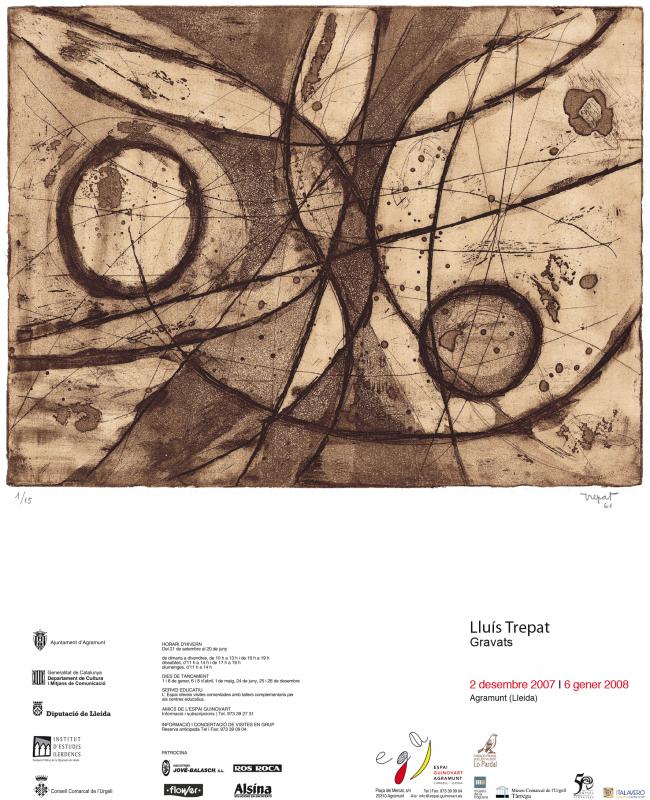Lluís Trepat
Engravings
The last half of the twentieth century has been highly qualitative in terms of the widening of the perspectives of contemporary Catalan engraving. Lluís Trepat is an unusual case in this panoramic view. He is an expressionist and figurative maker, and devoted much production to woodcut and linocut, more specific procedures of his authorship. The linoleum, which he executes with extreme freedom, has no precedents as those that represents the whole of his work.
The first prints by Lluís Trepat are dated from the year 1952 and represent scenes Parisian. The drawing tells about the composition, of an expressive ingenuity.
When he returned from Paris, Trepat settled in Lleida. In 1955 he returns to Paris. He knows and deals with the painter Vilacasas. Abstraction is in fashion in Paris and has the opportunity to treat it live and live. Since 1955, the prints by Lluís Trepat have shown interest in abstraction.
In 1962, Trepat and his family settled in Barcelona. The arrival in Barcelona coincides with the development of a new perspective dominated by expressionism that had already been practiced in Lleida, in the series of agricultural machinery and public works. In the series of "machines", in 1960, which still remembered an abstract will, a new period of "marines" and port themes continued, which began to appear in their paintings. It is also from those years 1964 to 1965 that he began to practice the linocut, which is quite suitable for representing this chromatic world of beaches and waves, from the sea and from the land.
The linoleum iron allows you a larger format and, of course, a chromatic luminosity.
In 1971, he produced, with Guillem Viladot, the book Tonada de la vista, the saying, search and find, which was published in Agramunt. The poet's textual proposal wanted to demystify the value of the nouns, as did the surrealists.
Then, Trepat illustrates the book of Viladot Soups with toasted bread.
In 1977, the agramuntina collection of books by Lo Pardal publishes Poemes de gos, by Josep Vallverdú.
Then, in 1978, he made three linoleums for another book, Nadal, a shout for freedom, by Anton Sala Cornadó.
The practice of engraving does not, in any case, deteriorate during the 1980s and 1990s, with etchings, preferably, representing scenes with figures.
In 2006, a new editorial project was formed as an illustration of a poetic text by Guillem Viladot: La masia.
Trepat is still a mystery that deserves greater recognition and status.
Josep Miquel Garcia



